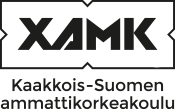Practical physics and chemistry (5 cr)
Code: EE00EC19-3001
General information
Enrollment
12.04.2021 - 25.04.2021
Timing
01.09.2021 - 31.12.2021
Number of ECTS credits allocated
5 op
Mode of delivery
Contact teaching
Campus
Mikkeli Campus
Teaching languages
- English
Seats
20 - 50
Degree programmes
- Degree Programme in Environmental Engineering
Teachers
- Liisi Rajala
- Reijo Vuohelainen
Teacher in charge
Liisi Rajala
Scheduling groups
- Pienryhmä A (Size: 18. Open UAS: 0.)
- Pienryhmä B (Size: 18. Open UAS: 0.)
Groups
-
EEMI20SPEnvironmental Engineering, full-time studies
Small groups
- Small group A
- Small group B
Objective
You know the basic phenomena, most important quantities, units, definitions and laws of fluid and solid state mechanics, thermal physics, electricity and wave motion. You can apply the concepts, for example, to calculations in fluid flow, to compute the effects of thermal expansion and to discuss different wave motions. You can study different phenomena and determine quantities experimentally. You know the operation principles of equipment commonly used in environmental measurements. You know how to interpret analysis results and how to write a consistent report.
Content
What are the basic phenomena, most important quantities, units, definitions and laws of fluid and solid state mechanics, thermal physics, electricity and wave motion?
How can you apply the concepts, for example, to calculations in fluid flow, to compute the effects of thermal expansion and to discuss different wave motions?
How can you study different phenomena and determine quantities experimentally?
What kind of methods are used to pretreat and analyse samples?
What kind of analyses and measurements are made to assess the state of the environment?
How is analytical equipment calibrated?
What factors affect the analysis result?
How to assure the quality of analytical results?
Materials
Lab experiment notes and other theory materials will be on Learn.
Teaching methods
You will attend teaching and guidance sessions as specified in the weekly schedule.
Your study routine is determined by the scheduled group sessions and by the self-study assignments. You will do the labs in small groups.
Employer connections
No external co-operation on this course.
Exam schedules
To be settled at the course kick off.
Student workload
Student work load is about 135 h, of which 50 hours are worked in labs. Homework, report writing takes the rest of the time.
Content scheduling
This course has two parts: Chemistry and Physics
Parts consist of laboratory works, self-study and reporting.
Labs are based on spring term Environmental Physics and chemistry course theory materials and beyond. Lab notes give detailed instructions of experiments and reporting.
Further information
Attendance on the laboratory sessions is mandatory.
Evaluation scale
1-5
Assessment methods and criteria
Each part (Chemistry and Physics) give the 50% of the final grade.
Lectures and laboratory exercises are collected into a lab report.
To be settled at the course kick off.
Qualifications
Environmental physics and chemistry
